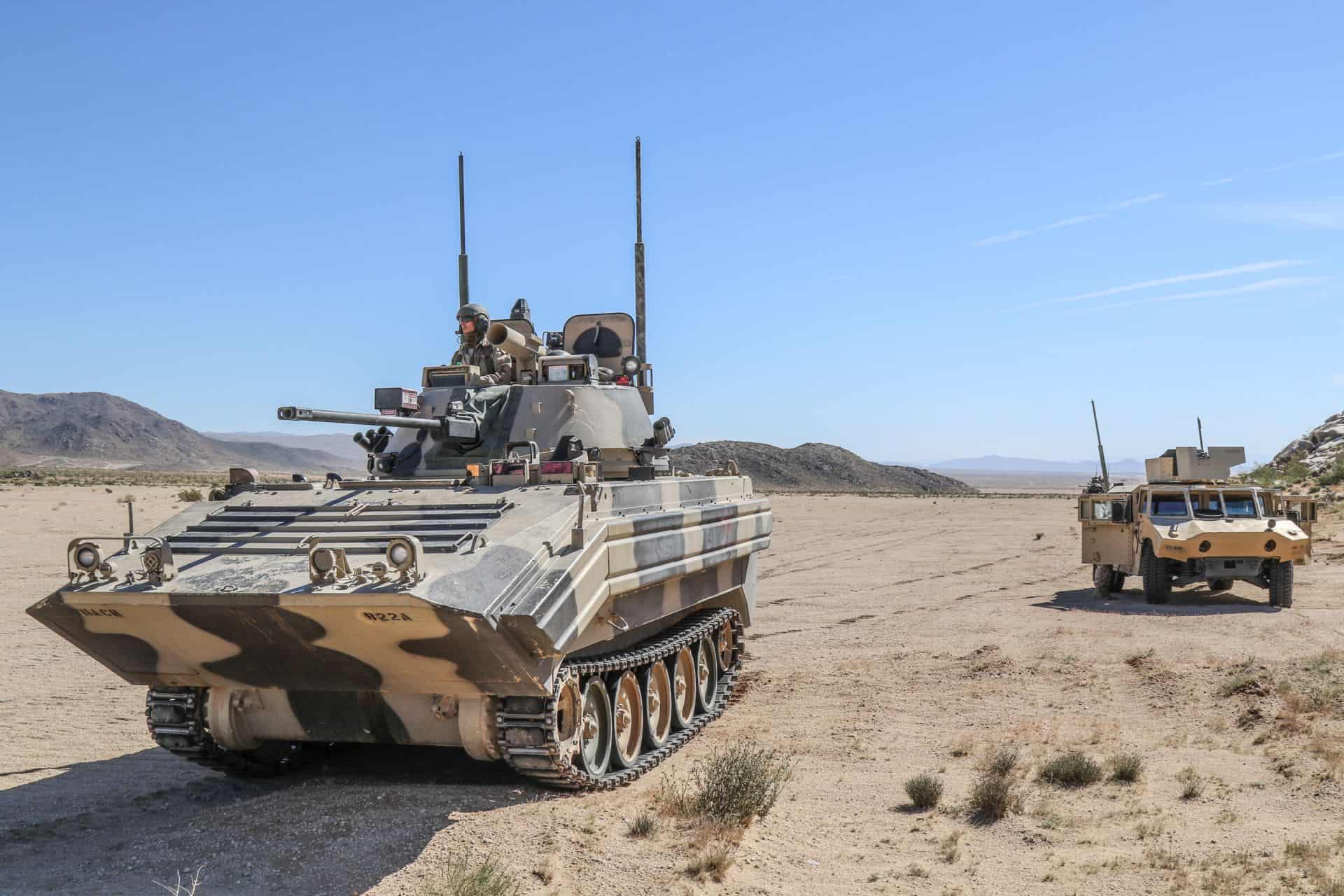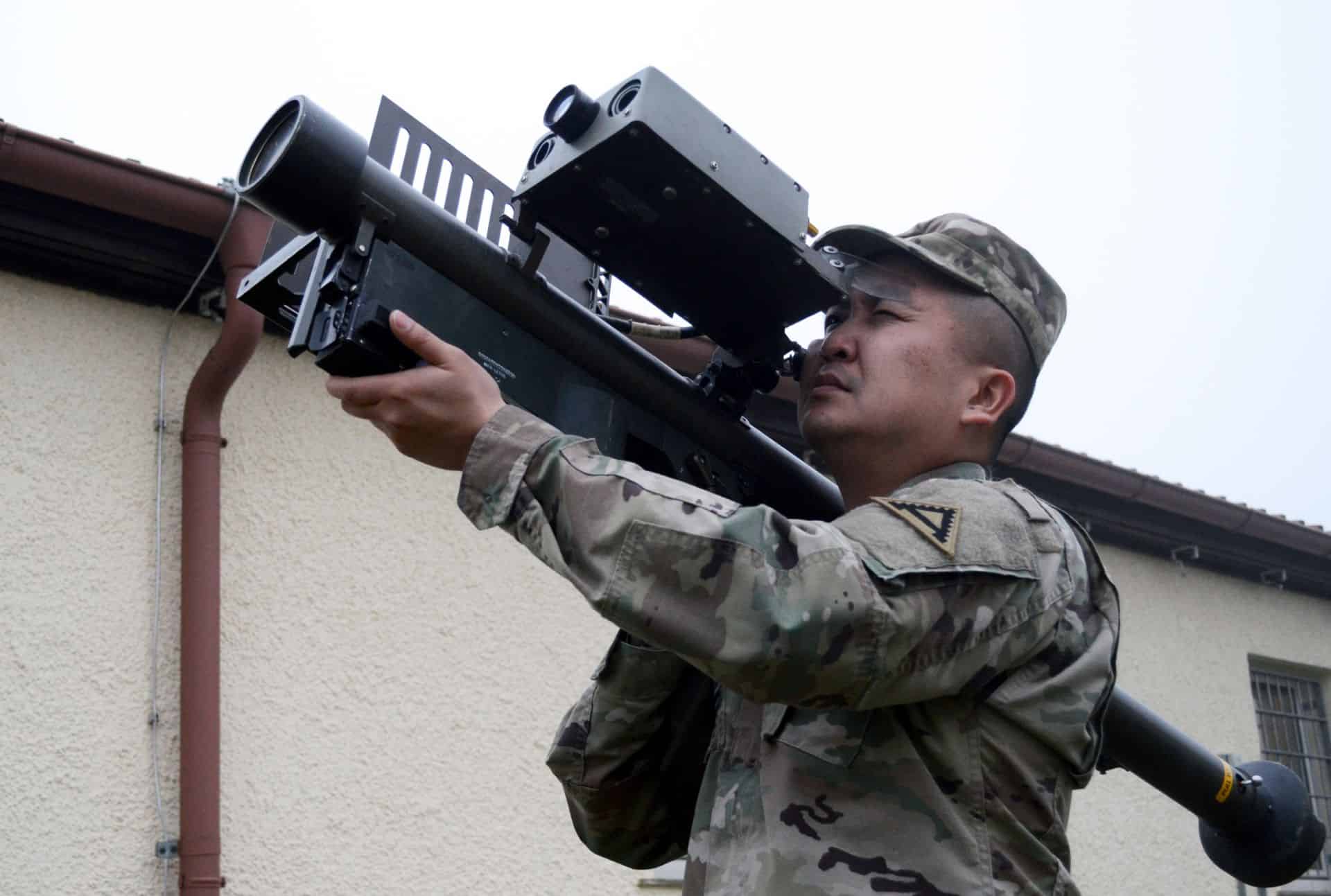In support of on-going efforts to make command posts more resilient, mobile and survivable, the Army is pushing to get Secure Wi-Fi to the field to help gain an operational edge against potential peer and near-peer adversaries.
Following the relocation of a command post on the battlefield, referred to as a “jump,” Secure Wi-Fi enables critical network and mission command systems to come up online in minutes, versus waiting many hours for Soldiers to wire a command post for network connectivity.
The 1st Armored Brigade Combat Team, 3rd Infantry Division successfully piloted this Secure Wi-Fi capability for a second time during decisive action training at the National Training Center, or NTC, on Fort Irwin, California, which concluded in November 2017. During this realistic combat training event, the unit fought against a capable adversary and used Secure Wi-Fi extensively throughout its brigade command post to speed maneuver, provide continuity of mission command and remain a step ahead of enemy forces.
“The key benefit provided by Secure Wi-Fi is the velocity that it brings to [the set up of] my mission command systems,” said Col. Michael Adams, commander of 1st Armored Brigade Combat Team, 3rd Infantry Division. “Near-peer adversaries are much more capable than enemies we trained against previously. In a decisive action training environment, [armed with Secure Wi-Fi], we are much faster and more mobile, and that equates to survivability.”
The unit successfully used Secure Wi-Fi to provide untethered network connections to enable secure wireless voice, video and data exchange on more than 60 unclassified computers and 100 classified computers and mission command systems, such as Command Post Of the Future. At any given point during this event, there were at least 60 active Secure Wi-Fi users inside the brigade main command post, known as the Tactical Operations Center, or TOC, Adams said. The only wired systems that were not allowed to be wired were those Army mission command systems that were waiting to receive Army authority to operate on Secure Wi-Fi.
“The win was that once the Wi-Fi system was up, I could get everyone up at the same time across the entire staff,” Adams said. “It’s a colloquialism; many hands make light work, but it’s also an ability to fuse the actions of the entire brigade combat team across all warfighting functions.”
Similar to the Wi-Fi used in most homes, the Army’s National Security Agency-accredited solution provides wireless network connectivity inside the command post, with added layers of security. Secure Wi-Fi is managed by the Army’s Product Manager Network Modernization, assigned to Project Manager Tactical Network.
Without wireless capability, establishing a network in a typical brigade command post takes many hours and requires dozens of boxes of expensive CAT 5 network cable that weigh hundreds of pounds. Every time a command post is jumped, the cables have to be cut, laid out, configured and plugged in, and often replaced because of damage and continual wear and tear. Protective flooring has to be laid over the wiring, making it difficult to troubleshoot network issues. Secure Wi-Fi can eliminate these hurdles since its small remote access points provide quick and easy network connections throughout the entire command post within minutes.
“Secure Wi-Fi also speeds our mission military decision making process,” Adams said. “If I know that something is going on and I can get ahead of the enemy commander, then I can set the conditions so that he is fighting from a position of disadvantage. With Secure Wi-Fi, I gain an exponential increase in velocity, and the deeper the Wi-Fi capabilities in the formation, the more we are able to do.”
To outmaneuver its near-peer adversary at the NTC, 1st Armored Brigade Combat Team, 3rd Infantry Division had to jump its brigade TOC several times during the realistic field exercise. These massive relocation efforts in the harsh terrain of the Mojave Desert were sometimes conducted in the dark of night, and because of mock threats of chemical and biological warfare, Soldiers were required to wear protective gear, making it more difficult to set up and wire a large brigade command post. Secure Wi-Fi made it much easier and faster to set up the network (from hours to minutes) under these extreme conditions, and users were able to connect to the network and use their mission command systems earlier and stay connected longer prior to the next jump, Adams said.
“Without Wi-Fi, users were often waiting (depending on position or rank) for wire to be run,” said Maj. Michael Donegan, 1st Armored Brigade Combat Team, 3rd Infantry Division communications officer (S6). “This proves wildly inefficient, as everyone on a TOC floor has an immediate and uniquely important job to accomplish. The ability to rapidly collaborate in planning is critical in order to defeat a near-peer threat. With the introduction of Wi-Fi, you don’t have to choose or prioritize which users get access first.”
Secure Wi-Fi decreased the brigade’s TOC relocation time dramatically, with the unit able to be up on all Army mission command system services simultaneously much sooner after arriving on site. It also enabled the commander to set up the TOC in different configurations to support new locations or mission requirements without having to cut new lengths of wire, Donegan said.
“The ability to have a mobile command post and exercise mission command with Secure Wi-Fi continues to be a force multiplier,” Donegan said.
Adams said he is looking forward to seeing Secure Wi-Fi eventually implemented at battalion-level command posts as well, to further increase his brigade’s speed of maneuver. The Army has recently developed a smaller version that reduces the footprint of the server stacks by 60 percent, to support smaller echelon command posts requiring fewer users. The Army plans to demonstrate this small form factor Secure Wi-Fi capability during a risk reduction event in spring 2018 as a rapid acquisition initiative.
The Army continues to use Soldier feedback from pilots, user juries and training events such as NTC rotations to continuously improve and provide the best capability possible, as part of an iterative process where lessons are always being learned and technology continuously is adapted to the way the Army needs to fight.
In December 2017, the Army issued a Command Post Directed Requirement, intended to enable experimentation and rapid prototyping to better inform command post requirements. The directed requirement is closely nested with the draft Command Post Integrated Infrastructure, or CPI2, capability development document, which would create a new program of record to provide mobile command post solutions to Corps, Division, and Brigade Combat Teams.
The directed requirement calls for the Army to leverage wireless technology capabilities to facilitate rapid connectivity and displacement. Secure Wi-Fi is proving to be a vital element in the Army’s acquisition of new integrated expeditionary command posts solutions, said Lt. Col. Mark Henderson, the Product Manager for Network Modernization who manages Secure Wi-Fi for the Army. Henderson is a member of Project Manager Tactical Network, PEO C3T.
“Lack of mobility and agility are amongst the biggest factors making today’s large command posts vulnerable in near peer threat environments,” Henderson said. “Secure Wi-Fi increases mobility and operational flexibility, and better enables mission command so commanders can do what they do best — fight and win!”











